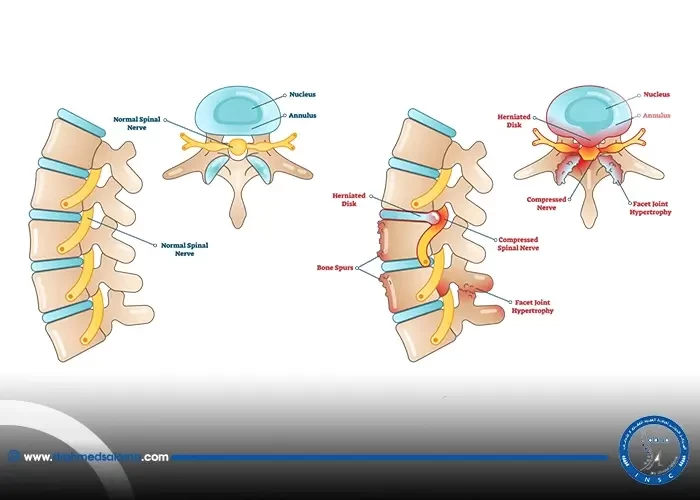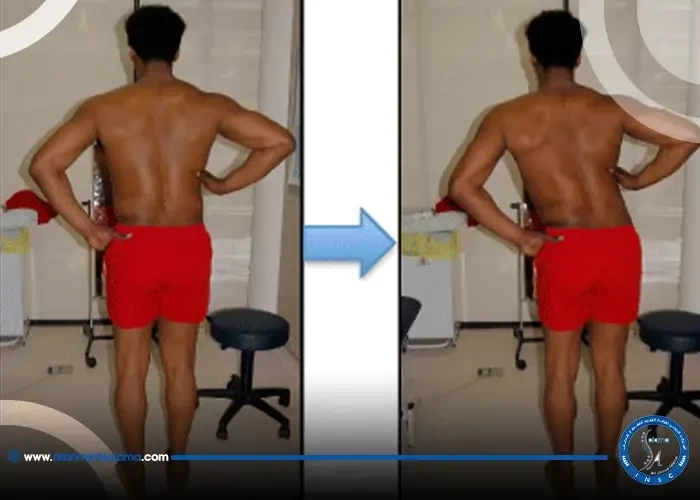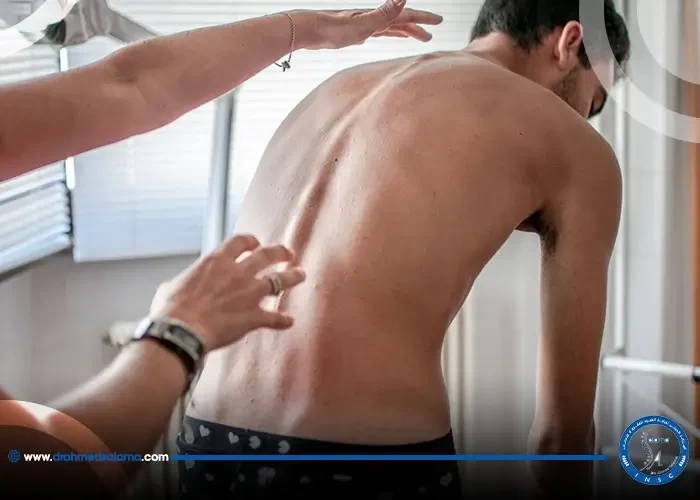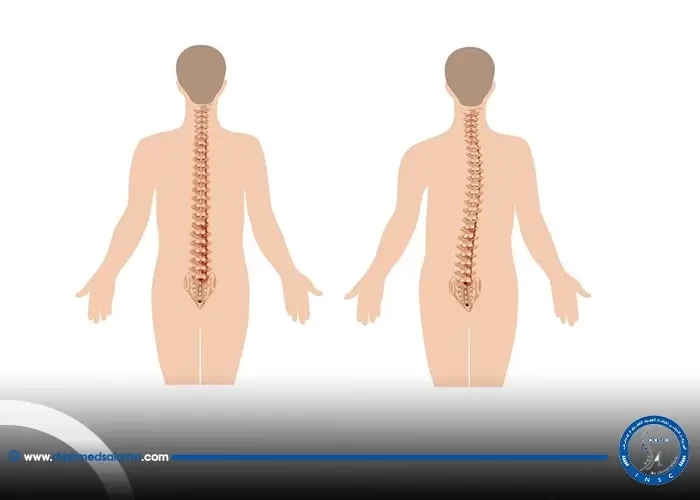Nasr City, 52 El Tayaran Street, in front of the Health Insurance Hospital

Lumbar spinal canal dilation

The lumbar spinal canal is a crucial structure in the human body. It contains the spinal cord – a vital organ that controls and coordinates movements, sensations, and bodily functions. However, several factors can cause compression of the lumbar spinal canal, resulting in back pain, numbness, weakness, or even paralysis. To address these issues, professionals have developed various techniques to expand the lumbar spinal canal safely and effectively. In this blog post, we will explore some of these techniques and their potential benefits for people with lumbar spinal stenosis or other conditions affecting the spinal canal. So if you're interested in learning more about the expansion of the lumbar spinal canal, read on!
Introduction to the Expansion of the Lumbar Spinal Canal
The expansion of the lumbar spinal canal is crucial in treating lumbar canal stenosis, which is an anatomical or functional narrowing of the osteoligamentus vertebral canal and/or the intervertebral foramina. In this blog section, the focus will be on introducing the concept of the expansion of the lumbar spinal canal, which is a surgical technique used to relieve pressure on the spinal cord and nerves. This technique produces complete decompression and anatomical reconstruction of the lumbar spine, thereby alleviating the symptoms of lumbar spinal stenosis. The following sections will delve deeper into the definition, causes, symptoms, and surgical techniques for lumbar canal stenosis, with a special emphasis on restorative laminoplasty, which is a new surgical technique for treating lumbar canal stenosis. Stay tuned to learn more about the expansion of the lumbar spinal canal and its implications for future treatments.
Lumbar Canal Stenosis: Definition and Causes
The Expansion of the Lumbar Spinal Canal is an innovative surgical technique that aims to provide complete decompression of the spinal canal, particularly in cases of Lumbar Canal Stenosis. Lumbar Canal Stenosis refers to the narrowing of the spinal canal in the lower back, which can cause compression of the nerves traveling through the area and result in leg and back pain. This condition can be caused by degeneration of the vertebral disc or hypertrophy of the osseous and soft tissue structures surrounding the lumbar spinal canal, leading to the compression of the cauda equina roots. The Expansion of the Lumbar Spinal Canal aims to address these issues and provide long-lasting relief for patients suffering from lumbar canal stenosis. With the use of restorative laminoplasty and anatomical reconstruction techniques, this surgical approach allows for objective determination of spinal canal stenosis, complete decompression of the spinal canal, and improved patient outcomes.
Symptoms of Lumbar Canal Stenosis
Symptoms of lumbar canal stenosis can be varied, but most commonly, patients experience leg and back pain. The condition refers to a narrowing in the vertebrae, particularly in the areas of the central canal, which can cause compression of the nerve roots and inflammation. Neural ischemia and defective nerve conduction may also contribute to the symptoms. Tingling or numbness in the leg may also occur, as well as weakness and difficulty walking. It is important to note that some cases of lumbar spinal stenosis may not produce any noticeable symptoms at all. It is crucial to consult a doctor to determine the severity of the condition and receive appropriate treatment.
Surgical Techniques for Lumbar Canal Stenosis
Surgical techniques play a crucial role in the treatment of lumbar canal stenosis. The traditional approach involves decompression, which aims to release the pressure on the spinal cord or nerves, but it may not provide long-lasting relief. Foraminotomy involves enlarging the opening for the nerve root, while laminotomy removes part of the bony arch that covers the spinal canal. In recent years, innovative surgical techniques have emerged, such as restorative laminoplasty, which involves the creation of a new hinge in the bony arch to expand the spinal canal. Another approach is anatomical reconstruction, which involves realigning the spine in its natural position to remove the compression. The common goal of these techniques is to achieve complete decompression of the spinal canal and provide relief from the symptoms of lumbar canal stenosis. Objective determination of spinal canal stenosis through imaging is crucial to determine the most appropriate surgical technique for each patient. The expansion of the lumbar spinal canal through surgical techniques has shown promising results and is expected to have future implications in the management of lumbar canal stenosis.
Restorative Laminoplasty: A New Surgical Technique
Restorative laminoplasty is a newer surgical technique that has been found to be highly effective in expanding the lumbar spinal canal. It involves the use of posterior complex access to the spinal cord, allowing for a direct approach to the affected area. Unlike traditional decompression laminectomy, restorative laminoplasty aims to not only open up the spinal canal but also restore the natural anatomical structure of the lumbar spine. By doing so, complete decompression of the spinal canal can be achieved, resulting in significant relief of symptoms. Central stenosis and compression of the spinal cord are also addressed through this technique. With the help of CT and MRI scans, the extent of spinal canal enlargement and spinal cord decompression can be objectively determined. The future implications of restorative laminoplasty are promising for individuals suffering from lumbar canal stenosis, offering the possibility of a more precise and effective surgical solution.
Anatomical Reconstruction of the Lumbar Spine
In the process of treating lumbar canal stenosis, anatomical reconstruction of the lumbar spine is crucial. With restorative laminoplasty, a new surgical technique, complete decompression and anatomical reconstruction of the spinal canal can be achieved. The procedure creates space for the spinal cord and reduces pressure on the nerves travelling from the lower back to the legs. Through the use of posterior fixation, bone grafting, and ligamentoplasty, flexion is reduced and extension is prevented. An anterior wall of the vertebral canal formed by the strong ligament arising from the body of the axis (C2) is used to support the reconstruction of the lumbar spine. This innovative technique not only addresses the pain and symptoms caused by lumbar canal stenosis, but also has potential for future implications in improving the overall spinal health of patients.
Complete Decompression of the Spinal Canal
Complete decompression of the spinal canal is the most crucial step in surgical treatment for lumbar canal stenosis. This procedure involves the removal of the bony and soft tissue that causes spinal cord and nerve compression. Open laminectomy alone can provide partial decompression, but fusion surgery may be necessary to address complex cases. Restorative laminoplasty offers an alternative surgical technique that aims to facilitate the expansion of the spinal canal without sacrificing spinal stability. Anatomical reconstruction of the lumbar spine may be necessary in severe cases where the spine is unstable. Objective determination of spinal canal stenosis is essential to provide accurate diagnoses that guide appropriate treatment modalities. The expansion of the lumbar spinal canal offers hope for patients suffering from lumbar canal stenosis, enabling them to reclaim their quality of life through safe and effective surgical treatments.
Central Stenosis and Compression of the Spinal Cord
Central stenosis is a severe form of lumbar spinal stenosis that causes the compression of the spinal cord itself. As a result, patients may experience numbness, tingling, and weakness in their legs and difficulty with their bowel and bladder function. Restorative laminoplasty and surgical techniques that aim to expand the lumbar spinal canal have been developed to treat central stenosis. Complete decompression of the spinal canal is required to relieve the compression of the spinal cord. Objective determination of spinal canal stenosis is also needed to determine the extent of the stenosis and to plan the appropriate surgical procedure. In the future, the expansion of the lumbar spinal canal may play a more significant role in treating central stenosis and reducing the need for invasive surgical interventions.
Objective Determination of Spinal Canal Stenosis
Once the symptoms of lumbar spinal stenosis have been identified, it is important to objectively determine the degree of spinal canal stenosis. This helps the medical team decide the appropriate treatment plan for the patient. There are various diagnostic imaging techniques such as MRI and CT scans that can provide a visual representation of the spinal canal and indicate the degree of canal narrowing. In addition, quantitative tools such as lateral flexion-extension radiographs can help in determining sub-types of spinal canal stenosis. Objective determination of spinal canal stenosis is necessary for accurate diagnosis and effective treatment. With advances in technology and diagnostic tools, the expansion of the lumbar spinal canal can be effectively determined, allowing for the development of personalized, targeted treatment plans for individuals suffering from lumbar spinal stenosis.
Future Implications for the Expansion of the Lumbar Spinal Canal.
Looking towards the future, there are promising implications for the expansion of the lumbar spinal canal. Advancements in surgical techniques, such as restorative laminoplasty and anatomical reconstruction of the lumbar spine, offer new options for treating lumbar canal stenosis. Central stenosis and compression of the spinal cord can now be addressed with complete decompression of the spinal canal. Additionally, objective determination of spinal canal stenosis can aid in more accurate diagnosis and treatment planning. As technology and research continue to evolve, it is likely that further innovations will arise for expanding the lumbar spinal canal and improving patient outcomes.
How is the spinal canal expanded?
The method of spinal canal widening varies depending on the type of lumbar spinal canal widening procedure performed. The spinal canal can be widened through laminectomy, laminectomy, or laminoplasty. The surgeon chooses between the three options depending on the patient's condition and the location of the narrowing.
What causes spinal stenosis?
There are many causes that lead to spinal canal stenosis, including exposure to bone fractures, rheumatoid arthritis, and other factors.






